Watching thrilling fireworks displays is a Bonfire Night classic.
Over 400 years since the Gunpowder plot failed, weвҖҷre still marking the occasion every year with fireworks - and toffee apples!
But you might not know that fireworks have a long history, dating back to at least 200BCE, or that they are often named after flowers.
Here are five twinkling facts about fireworks.
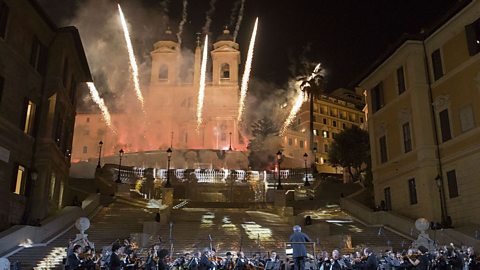
Fireworks have a long (and royal) history
A proto version of firecrackers was developed around 200BC in China. Bamboo shoots were thrown onto fires, which caused the air inside of them to expand, making them explode with a crack. It was believed the loud noise would scare evil spirits away.
Things got even louder with the invention of gunpowder by Chinese alchemists - also by accident. This mixture was packed into bamboo and later paper tubes andвҖҰ BANG! the first fireworks lit up the sky.
Fireworks soon spread to Europe, their technology being tweaked over time.
Because they were expensive and showy, they were especially popular among European royalty. In Britain, the first documented fireworks display was at the wedding of Henry VII and Elizabeth of York in 1486. Queen Elizabeth I even appointed a man in to be in charge of their fireworks, the Fire Master of England.
In 1749, George II commissioned a piece from composer George Frideric Handel which would accompany the fireworks display at a celebration for the end of the War of the Austrian Succession. And so Handel's Music For The Royal Fireworks was born.
Not long after, in the 19th Century, the ice cream cone-shaped shell which hurls a firework higher into the sky was invented in Italy. Fireworks can reach speeds of 150 miles per hour when they are set off, and can cause injuries and accidents no matter what shape or size, so it's important not to get too close and let an expert adult handle them.

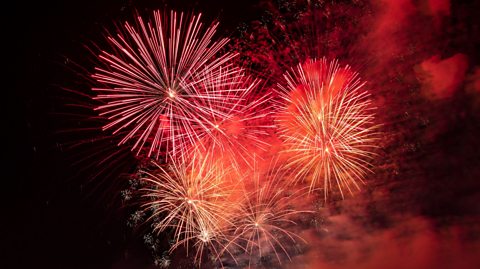
The colour in fireworks comes from different chemical elements
Early fireworks didnвҖҷt have any colour at all - the gunpowder produced orange flashes that lit up the dark.
In the 19th Century, scientists in Europe figured out that adding and combining different metal-based compounds to the devices resulted in vibrant colours.
Red, for instance, comes from strontium, green from barium, and mixing titanium, zirconium and magnesium gives a bright white.
A вҖҳperfectвҖҷ blue is very difficult to for fireworks designers (also called pyrotechnicians) to make. Blue comes from copper, but if the temperature gets too hot the colour vanishes, and if it's too low you don't get any colour at all.
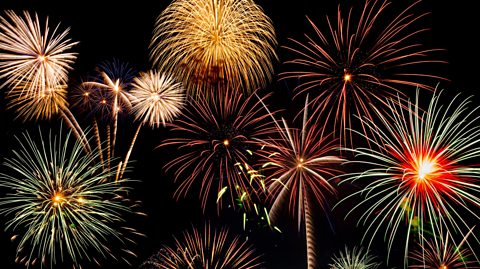
Many firework shapes are named after flowers
Fireworks make many different shapes in the sky, and they all have different names. Many of them get their names after flowers.
A peony, the most common type, is a simple spherical arrangement of stars which explode outwards and then fall down, while a chrysanthemum is the same but the stars leave a visible trail of sparks.
Then there are dahlias, whose stars travel a longer distance than the chrysanthemum or peony. Palm trees have a rising вҖҳtrunkвҖҷ of sparks which splits into six trailing star fronds, and might be accompanied by smaller exploding micro-shells, called вҖҳcoconutsвҖҷ.
There are also brocades, which have stars that fall in an umbrella pattern; falling leaves, which have stars that twinkle as they flutter down; and crackling rain which, as the name suggests, makes a noise as the stars descend through the sky.
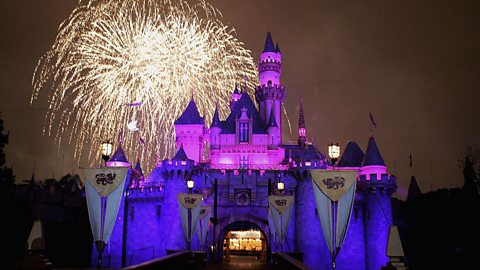
Walt Disney is the biggest buyer of fireworks in the world
The worldвҖҷs biggest buyer of fireworks is said to be The Walt Disney Company, which spends an estimated $50 million a year on the displays it stages every night over its various parks around the world.
According to Guinness World Records, the largest individual fireworks display took place at the Church of Christ in the Philippines during the countdown to the 2016 New Year celebrations.
An astonishing 810,904 fireworks were set off in a display that lasted just over an hour. Unfortunately, it rained throughout.
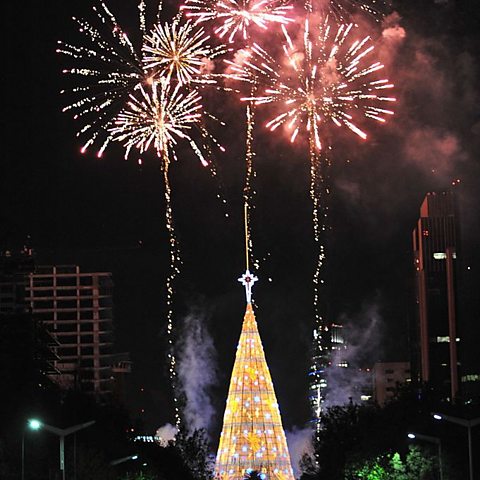
Different countries celebrate different holidays with fireworks
While in the UK we celebrate Bonfire Night on 5 November with breath-taking fireworks, in countries around the world other holidays are marked with dazzling displays.
In the USA, Independence Day on 4 July is celebrated with fireworks all over the country. Canada has displays on Canada Day on 1 July, while Lunar New Year is celebrated by communities across the world with millions of firecrackers and dragon dances. In France, Bastille Day on 14 July is marked with displays after a day of picnics, and in Mexico Christmas is also celebrated with fireworks.
In India and in Hindu communities all around the world, Diwali celebrations feature fireworks to mark the triumph of light over dark.
And across the world the New Year is often marked with displays, many of the most spectacular being in the worldвҖҷs capitals.
This article was published in October 2024

Looking for quizzes, amazing stories and fun facts?
Bitesize Topical has it all!

Who were the other Gunpowder Plotters?
You know Guy Fawkes but what about Robert Catesby, Francis Tresham and the others?
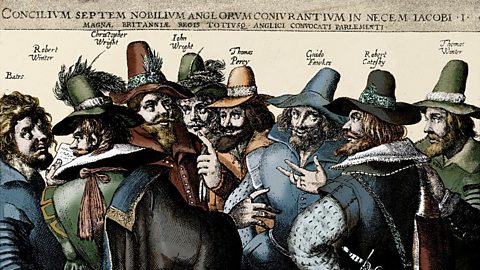
New Year traditions in the UK and around the world
First-footing, oliebollen and empty suitcases are all ways of seeing in 1 January

The secret history of popcorn
From Aztec ceremonies to cinemas, this light and tasty snack has a rich and colourful history.
